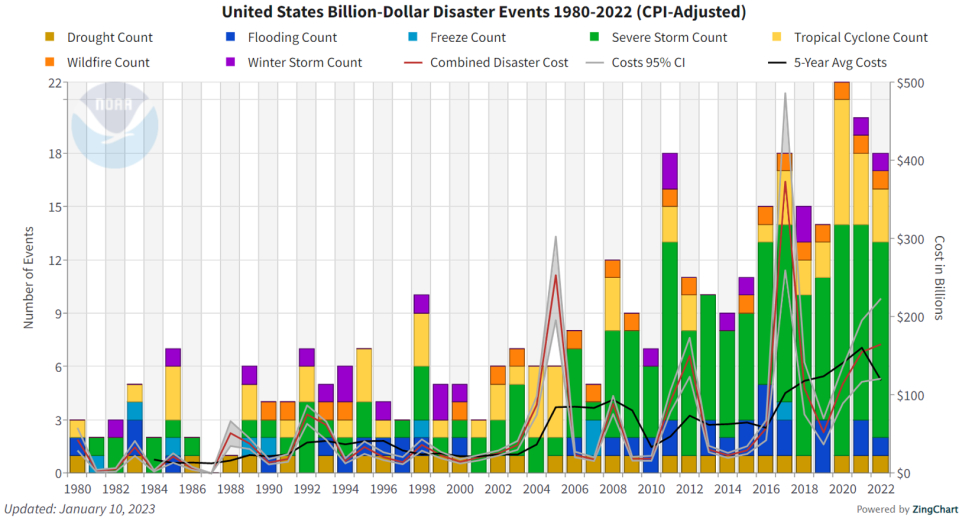As Hurricane Idalia nears, these tech tips can help protect your home from fires and floods
With Hurricane Idalia barreling towards Florida and Georgia, many homeowners feel unable to protect their property – and more importantly, their family – from gale force winds, torrential rain, and flooding.
In 2022, 18 natural disasters in the U.S. caused more than $1 billion in damage each, between three hurricanes (led by Hurricane Ian last fall), two tornadoes, several extreme storms, wildfires, and drought. At least 115 people perished in Maui this month, the deadliest wildfire in modern US history, and with many more still unaccounted for.
It's possible, however, to mitigate the damage done to our property by employing relatively inexpensive technology as part of your “emergency preparedness” planning.

How can I protect my house from flooding during a hurricane?
There are several steps a homeowner can take to reduce the odds of damage from high winds and water – especially in vulnerable parts of the country.
The goal is to keep water from entering the home. So a good (though non-tech) tip is to secure roof shingles, check gutters and downspouts for proper drainage and seal all openings, cracks and holes.
Also, use water-resistant building materials for renovations – especially below ground level for those with basements. Make sure there is weather protection sealant around basement windows and the base of ground-level doors
Hurricane Hilary threat: Southern California under first tropical storm watch in history as Hurricane Hilary nears
How can technology help prevent flooding in my home?
There are a few products that can help warn you of flood damage, including inexpensive small sensors you can place around your home to detect moisture and notify you via an app or announce a problem on a smart speaker.
Examples include the mydlink Water Sensor ($80), Kidde's Water Leak + Freeze Detector ($45) and Moen Leak Detectors ($59 for 1 or $150 for 3).
Note: these Wi-Fi-connected sensors can't stop the water from causing costly problems in your home, but they can immediately notify you of the issue, in order to mitigate damage.
How do I make sure my house is safe from fire?
For wildfires specifically, homeowners should conduct a home assessment to see what changes could make a big difference in reducing their home's risk from wildfire – and there are websites and apps with checklists that can help.
General fire prevention tips include regular cleaning of roof surfaces and gutters, yearly chimney inspection, managing vegetation to create a noncombustible zone several feet from your home, and keeping power lines near your home clear of tree limbs.
What is the technology for fire prevention in the home?
Smoke alarms are getting more advanced and can give you and your family notice of fire, smoke, and carbon monoxide, or CO, poisoning.
Storm-related outages can significantly increase the odds of a house fire or CO poisoning, due to the use of generators, according to Kidde, a manufacturer of fire safety products. Battery-based generators may be a safer bet compared to gas-based ones.
Follow Marc on Twitter for his “Tech Tip of the Day” posts: @marc_saltzman. Email him or subscribe to hisTech It Out podcast.
The views and opinions expressed in this column are the author's and do not necessarily reflect those of USA TODAY.
This article originally appeared on USA TODAY: How to protect your home against fires and flooding: Tech tips to help


